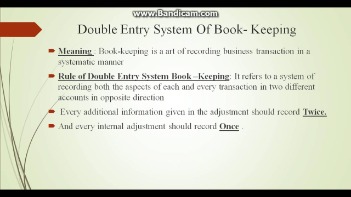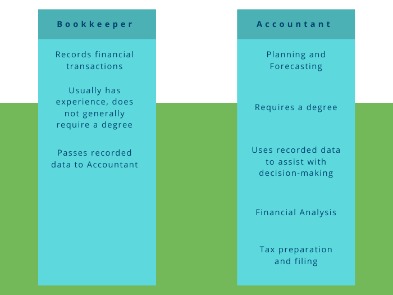
Bad debt is considered a normal part of operating a business that extends credit to customers or clients. Companies should estimate a total amount of bad debt at the beginning of every year to help them budget for that year and account for non-collectible receivables. The allowance for doubtful accounts nets against the total AR presented on the balance sheet to reflect only the amount estimated to be collectible. This allowance accumulates across accounting periods and may be adjusted based on the balance in the account. Because no significant period of time has passed since the sale, a company does not know which exact accounts receivable will be paid and which will default. So, an allowance for doubtful accounts is established based on an anticipated, estimated figure.
What Is Bad Debt? Write Offs and Methods for Estimating – Investopedia
What Is Bad Debt? Write Offs and Methods for Estimating.
Posted: Mon, 31 Jul 2023 07:00:00 GMT [source]
This difference in depreciation models results in a deferred tax liability. The FASB requires disclosure of deferred tax balances in the financial statements, found here. To illustrate the concept of a deferred tax liability, imagine you’re at a bar with an open tab. At the end of the night, you go to the bar to pay off your tab, but the bartender has mistakenly closed out the register and can no longer process your tab.
How Do You Report a Non-Business Bad Debt to the IRS?
Bad debt is an amount of money that a creditor must write off if a borrower defaults on the loans. If a creditor has a bad debt on the books, it becomes uncollectible and is recorded as a charge-off. Bad debt is a contingency that must be accounted for by all businesses that extend credit to customers, as there is always a risk that payment won’t be collected. These entities can estimate how much of their receivables may become uncollectible by using either the accounts receivable (AR) aging method or the percentage of sales method. Because you can’t be sure which loans, or what percentage of a loan, will translate into bad debt, the accounting method for recording bad debt starts with an estimate.
Therefore, the business would credit accounts receivable of $10,000 and debit bad debt expense of $10,000. If the customer is able to pay a partial amount of the balance (say $5,000), it will debit cash of $5,000, debit bad debt expense of $5,000, and credit accounts receivable of $10,000. The original journal entry for the transaction would involve a debit to accounts receivable, and a credit to sales revenue. Once the company becomes aware that the customer will be unable to pay any of the $10,000, the change needs to be reflected in the financial statements.
The accounts receivable aging method involves the balancing of uncollectible accounts receivable. This is estimated by projecting the percentage of doubtful debts over a defined period. A bad debt expense can be estimated by taking a percentage of net sales based on the company’s historical experience with bad debt. This method applies a flat percentage to the total dollar amount of sales for the period. Companies regularly make changes to the allowance for doubtful accounts so that they correspond with the current statistical modeling allowances.
How to calculate and record the bad debt expense
The bad debts or a provision for bad debt is reduced from debtors and the net figure is shown in the balance sheet. Not only does this help forge better customer relationships, but it also minimizes bad debt expense by reducing the likelihood of receivables becoming uncollectible. A collaborative AR tool like Versapay combines cloud-based collaboration features with what you’d expect from a first-rate accounts receivable automation solution.
It is also crucial to understand the definition of the term expense in accounting. This definition can help set apart bad debts from how do you calculate net income attributable to non controlling interest other items in the financial statements. Essentially, accounting defines expenses as outflows of economic benefits during a period.
Now that you know how to calculate bad debts using the write-off and allowance methods, let’s take a look at how to record bad debts. Recording uncollectible debts will help keep your books balanced and give you a more accurate view of your accounts receivable balance, net income, and cash flow. Because the company may not actually receive all accounts receivable amounts, Accounting rules requires a company to estimate the amount it may not be able to collect. This amount must then be recorded as a reduction against net income because, even though revenue had been booked, it never materialized into cash. The percentage of sales method simply takes the total sales for the period and multiplies that number by a percentage. Once again, the percentage is an estimate based on the company’s previous ability to collect receivables.
By estimating the amount of bad debt you may encounter, you can budget some of your operational expenses, as an allowance account, to make up for some of your losses. In some cases, companies may recover balances even though they were irrecoverable before. If that occurs, companies must reverse the accounting for bad debt expense. Usually, this process involves creating an income on the income statement.
Create a free account to unlock this Template
The bad debt expense appears in a line item in the income statement, within the operating expenses section in the lower half of the statement. Different from direct write off, the allowance method requires the management to record the bad debt expense by the time sale is made. The answer is we use an accounting estimate to get the estimated amount for recording.

Bad debt expense is an accounting entry that lists the dollar amount of receivables your company does not expect to collect. The allowance for bad debts can be calculated by dividing the anticipated bad debt by the total amount of sales expected and multiplying this figure by 100. Some argue that debt should be classified as an operating expense because it’s necessary to run the company. They argue that doubtful debt shouldn’t be reported as a liability because the money is owed to creditors and not to shareholders. In some cases, the IRS allows tax filers to write off non-business bad debts. These debts must be completely not collectible, and the taxpayer must be able to prove they did as much as possible to recover the debt.
Business stage
Once doubtful debt for a certain period is realized and becomes bad debt, the actual amount of bad debt is written off the balance sheet—often referred to as write-offs. Cost of goods sold includes expenses directly related to a company’s core activities. On top of that, it only considers direct expenses rather than indirect. Therefore, companies cannot put this expense under the cost of goods sold. QuickBooks has a suite of customisable solutions to help your business streamline accounting. From insightful reporting to budgeting help and automated invoice processing, QuickBooks can help you get back to the daily tasks you love doing for your small business.
- Though part of an entry for bad debt expense resides on the balance sheet, bad debt expense is posted to the income statement.
- A collaborative AR tool like Versapay combines cloud-based collaboration features with what you’d expect from a first-rate accounts receivable automation solution.
- Bad debt expense is an accounting entry that lists the dollar amount of receivables your company does not expect to collect.
- Debt is the most common word, not just in business but across different situations.
- This content is for information purposes only and should not be considered legal, accounting, or tax advice, or a substitute for obtaining such advice specific to your business.
- For instance, if the bad debt allowance amounts to £990 in the following period, only £340 (£990- £650) will be recorded as bad debt.
In addition to streamlining internal and external communications, AR teams can automate their invoicing, collections, payment processing, and cash application workflows. With collaborative AR, you can ease communication with not only customers but also members of your sales team. Giving Sales access to customer payment history and cash flow data also helps them make more informed credit decisions. When handling disputes, AR teams can seamlessly loop in necessary team members to ease customer communication and tap into shared knowledge faster.
Bad debt is debt that creditor companies and individuals can write off as uncollectible. We also allow you to split your payment across 2 separate credit card transactions or send a payment link email to another person on your behalf. If splitting your payment into 2 transactions, a minimum payment of $350 is required for the first transaction. There must be an amount of tax capital, or basis, in question to be recovered. In other words, there is an adjusted basis for determining a gain or loss for the debt in question. Let say the next month, and one customer has gone out of business while owing us the balance of $ 1,000.
- Any action taken with regard to a bad debt must be noted in the company’s books.
- Financial statements report pre-tax net income, income tax expense, and net income after taxes.
- Most people may confuse this account as the liability, but it is not even it is a negative asset account.
- However, bad debt expenses only need to be recorded if you use accrual-based accounting.
- You want the majority of your loans and credit to be paid in full, on time, and with interest.
The main problem here is that only the best customers have enough cash to take advantage of these offers, resulting in the worst customers still having problems paying on time (if ever). A third option is to impose late payment fees on those customers that are persistently late in making payments, though doing so may drive them away. The revenue and expenses you report on your income statement don’t always translate into income and deductions for tax purposes.
In this sense, bad debt is in contrast to good debt, which an individual or company takes out to help generate income or increase their overall net worth. Bad debt provision strategy is about striking a balance between the minimum estimation and placing too much weight on potential crises that could happen but aren’t extremely likely to. QuickBooks has a suite of customizable solutions to help your business streamline accounting.